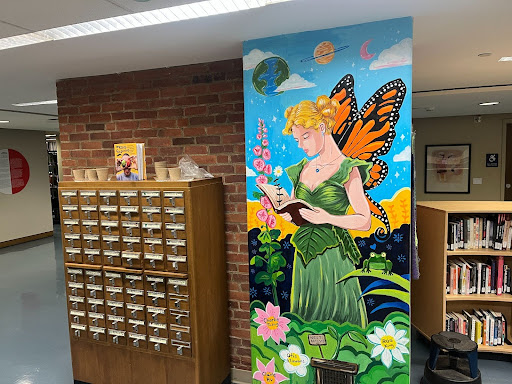Rajsi Rana ’26
Staff Writer
Art is something so incredibly human; it is a result of emotions and thoughts that only people, and on top of that, specific individuals who have gone through experiences unique to them, can hold and process enough to express creatively. Despite this, it is not necessarily an encouraged career path. Bishakh Som, a Bengali-American transgender woman,= who creates graphic novels and comics, has struggled through balancing what she wanted for her life and what her parents desired for her. Som began college trying to find a compromising major and settled on architecture, eventually going on to get a masters degree in architecture. Although she had a career in architecture for several years, she eventually left to work on her comics and art.
Som journeyed through several twists and turns to get to where she is today, in terms of career, gender identity, and South Asian identity. She chose art as her life path over all else. “A lot of my comics work has been about identity, about belonging, about the sense of ‘home,’ which, especially for a diasporic trans femme, is fleeting at best.” In Som’s art, she often includes South Asian characters and delves into exploring their identities and how they find home when they’ve lived between two identities for their whole lives. An excerpt from her “graphic almost-memoir,” Spellbound, says “…Or I could move to India, to cultivate a connection to—well, anything really—culture, family, history, some nebulous feeling, some sense of belonging I never had. Nostalgia for a past that never existed.” Through her art, Som has been able to “create small worlds that kick against the ugliness, hostility and mediocrity of 21st-century life—to manifest characters, words, colors, forms, symbols, patterns and rhythms that point to an aesthetic, one that has been shaped by all the visual and cultural touchstones that I’ve collected in my experience.” Because of her journey to establish art as her life, she has been able to process and turn her experiences into stories.
In South Asian culture, it is heavily prominent to look down upon and discourage those who pursue art. It is very common for those of South Asian descent to feel pressure to choose the life their parents want for them instead of the life they want for themselves. Some struggled with this same question. Som says, “I felt, in my own experience, that I couldn’t fully act on what I wanted for myself, both in terms of gender and art, until my parents were no longer around, acting as a sort of superego. I loved them both dearly, but I wouldn’t have dared push them on the topic of being trans or abandoning architecture, for fear of disappointing them in the extreme.”
Som was able to use her experiences—as a South Asian, as a trans woman, as an artist, as someone discouraged from pursuing her artistic dreams, as a previously trained architect—to create and establish the unique artistic vision she displays in her pieces. Every experience, both good and bad, has led her to her art career today. Som’s comics encapsulate how it feels to be a South Asian growing up in a western country, how it feels to feel discomfort in your gender identity, how it feels to choose art despite everyone in your life telling you not to. “Making art is one of only a few ways we have at our disposal to choreograph imagined environments that speak of alternate modes of living, of better shapes of existence.”









+ There are no comments
Add yours